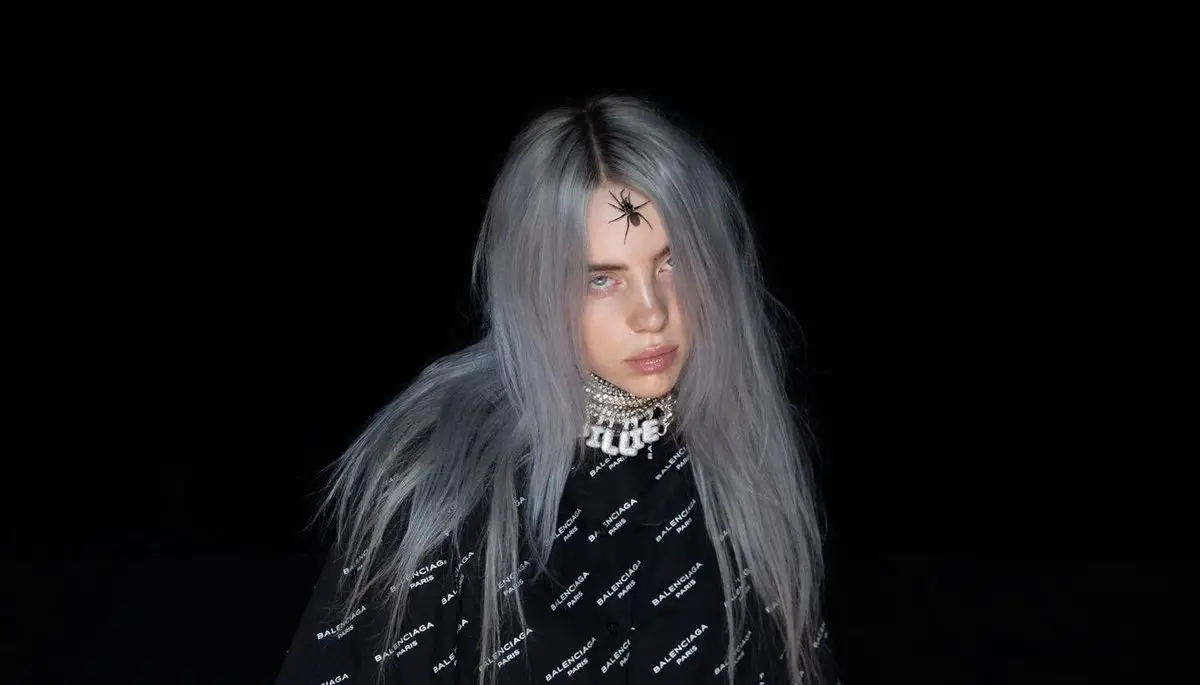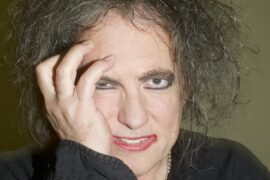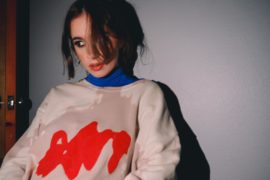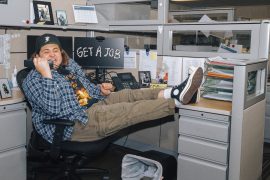Sam Griffiths takes us track-by-track through The Howl & The Hum’s breathtakingly intimate and brutally honest sophomore album ‘Same Mistake Twice’ – a tender indie rock tempest full of dread, human breath, and raw emotion.
“Same Mistake Twice” – The Howl & The Hum
I never make the same mistake twice; I always aim for a third time…
“Any time that I’ve tried approaching describing the album, I’ve started with the word dread.”
Sam Griffiths feels a lot of intense emotions around The Howl & The Hum’s sophomore LP, and perhaps rightfully so: The four years since the Yorkshire indie rock band’s critically acclaimed debut album have been long, turbulent, and at times unforgiving. Band members have come and gone, but mostly gone, and the project has itself reverted to the one-man solo effort it was when Griffiths first started out. Add to that a trove of anxieties and fears, insecurities and uncertainties around himself, his place in the world, the present, and the future, and one can begin to understand why the word “dread” would resonate so deeply with the singer/songwriter and bandleader.
“It’s quite an intimate part of my day-to-day existence, and it’s a word that I didn’t know that there was a word for,” he reflects. “But especially over COVID, when the majority of this album was written in lockdown, it’s something that I started experiencing more. And it was a dread of not only the social kind, but also the environmental kind and an existential kind – and obviously all the other things that fall into the social ones, like financial and work and future.”

I never make the same mistake twice
I always aim for a third time
I climbed through your window,
I tripped on the blinds
I guess I’m impaired in my foresight
I spent all my youth playing video games
That convinced me when we die, we go ’round again
Now all those mistakes, all these voice notes to you
I’ll sidestep with grace when I’m here for round two
‘Cause I never make the same mistake twicе
If I do it’s an encore
The ghost of Thеlonius Monk in my mind
says there’s no such thing as a wrong chord
Well I’m always forgetting my friends’ occupations
I swear that I’m listening, I’m just feeling jaded
You moved to London with everyone else,
I stayed in Yorkshire avoiding success
– “Same Mistake Twice,” The Howl & The Hum
Released September 6th, 2024 via Miserable Disco, Same Mistake Twice is the intrepid, impassioned triumph of an aching heart and weathered soul. The second full-length album from The Howl & The Hum is bold, breathtaking, and brutally honest – as much the product of isolation and intense introspection as it is the moving result of collaboration, community, and human connection.
Sure, it’s got Sam Griffiths’ ‘dreadful’ DNA all over it, but throughout the record’s twelve tracks, The Howl & The Hum uncover and ultimately embrace a refreshingly radiant light – one of hope, love, warmth, and possibility – in that otherwise interminable, crushing, all-consuming darkness that is our pointless mortal existence.
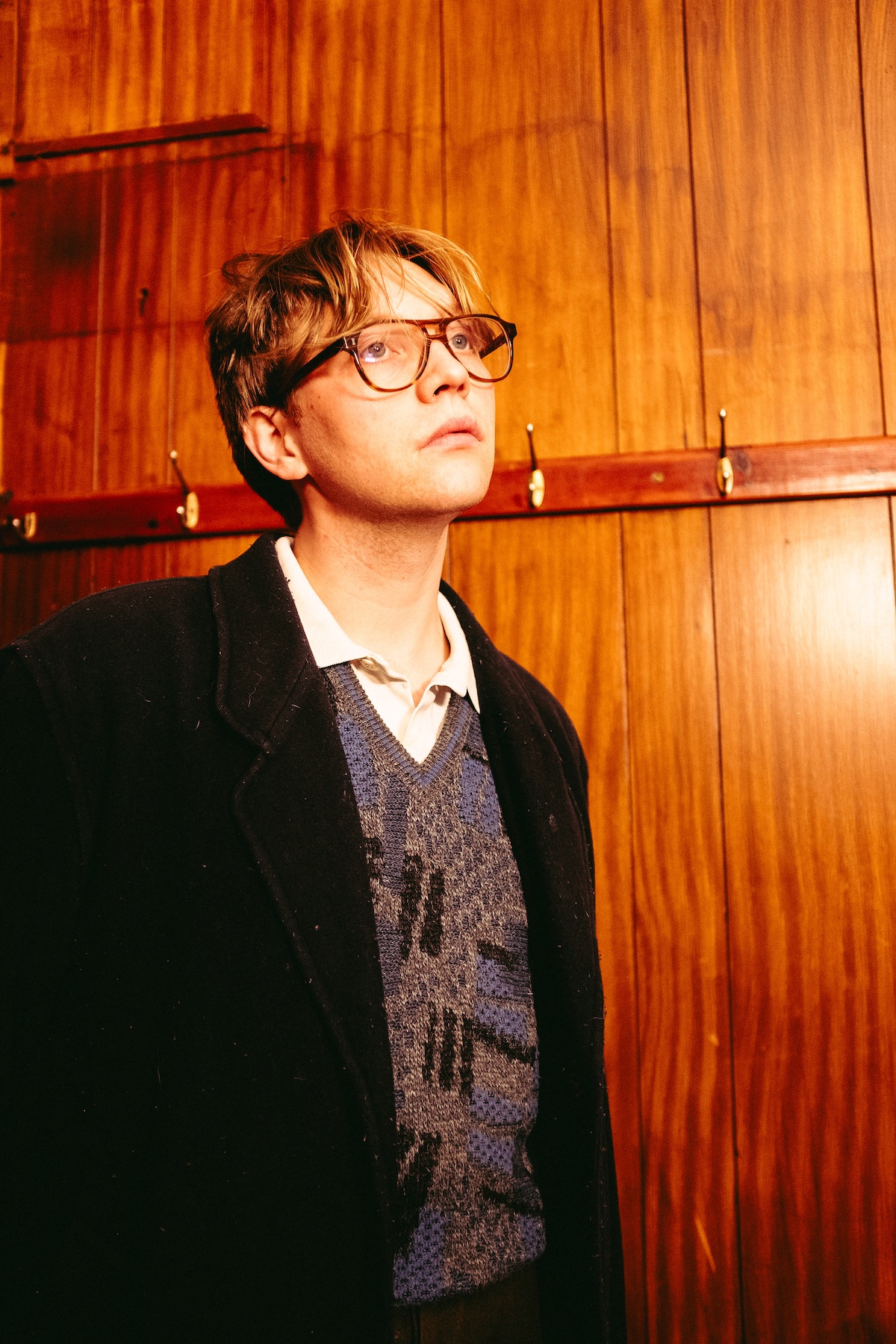
“I felt like I was rotting in one place over lockdown, and I couldn’t really turn it… I couldn’t really turn that sense of rotting in one place into anything that I wanted to listen to, until I managed to take a little bit of distance from it and managed to inject elements of humour into it,” Griffiths recalls. “I think one of the things that got me and a lot of friends through lockdown is TV shows and comedy and movies and reading. As soon as I found other art forms, other mediums that were able to take dread and anxiety and fear and turn them into something that could be laughed at and laughed with as parts of the human condition, it gave me a lot of impetus to turn that into a musical album.”
“And so that’s kind of where it started: A lot of anxiety, a lot of fear, a lot of worrying what the world made of me, and then made so much worse by only really having the internet to sort of judge myself through or be judged through. The band only exists as a digital entity these days, which is a very strange experience because we used to exist so much more as a live entity and play hundreds of shows a year, and we haven’t really gone back to that yet – so to only exist as a digital entity is quite an anxious being, I think.”
Sam Griffiths began his music career as a busker on the streets in New York, playing for weddings and function bands, before taking on the name The Howl & The Hum – “partly named after Allen Ginsberg’s 1955 poem Howl, which discusses themes from insanity to self-acceptance, and the humming sounds of the guitar, conveying the importance of literature and storytelling within their music,” per a 2018 Gigs and Tours article. By the time the project’s debut EP Godmanchester Chinese Bridge released in 2017, The Howl & The Hum were a four-piece comprised of Bradley Blackwell, Conor Hirons, and Jack Williams – and a fast-rising act in the UK’s live circuit.
Countless shows and lauded singles paved the way for the band’s highly-anticipated 2020 debut LP Human Contact, which featured on Atwood Magazine’s Albums of the Year and several other ‘Best Of’ Lists. Atwood’s own Bethan Harper praised the debut as “a heartbreakingly relatable ode to all the flaws that make us human… at moments gut-wrenching and at others joyous, wildly alternative while still accessible for the mainstream music world… an impeccable balance between creative exploration into delicate themes and listenable music.”
The only fatal flaw around Human Contact, if there was one, was its “uncanny” timing.
Released at the height of the COVID-19 pandemic in May 2020, the irony of the album’s title will forever haunt Griffiths, who swore after that experience that he would never “make the same mistake twice and call it something stupid that would relate to my overall situation.”
“And so leaning in on that joke, I decided to call the next one Same Mistake Twice,” he laughs.
“This album also coincided with the breakdown of the original lineup, which was four young men from Yorkshire. And that, in parallel with the album’s sense of anxiety, sort of gave it a bit more of a lyrical crux to me. It gave it a bit more in terms of characters to wander through, and a few people to discuss and bring into the conversation. So, although I was writing about relationship breakdowns and my own experience of being judged, a lot of it was about the musicians around me who were slowly falling away and getting further and further away. And through that, musically, the music started to do that as well. I think the music started to sound a little bit more lonely.”
“In album one, we introduced a lot of synthesizers and things, and it was a very ‘full’ sounding, very produced-sounding record. And in album two, we stripped that down a lot. I started listening to a lot more English folk music and American country music, a lot more very bare, very honest stuff. And I think a lot more of that side of things has made its way onto album two. There are more instruments that feel like they breathe a lot more. That was one thing I wanted to get on. Although I love synthesizers and I love a lot of ‘80s dance music and the Manchester scenes of the ‘80s, where they’re using synthesizers amazingly well, to me, they don’t have too much breath; there’s not much human life to them. We wanted to introduce a lot of human breath onto this album, so there’s a lot of saxophone. There’s a lot of wind instruments and breathing instruments, and a lot of very closely mic’d acoustic sounding instruments, whether that be guitars or pianos. We wanted to make it sound a lot more like a human record because we were talking a lot more about human things.”
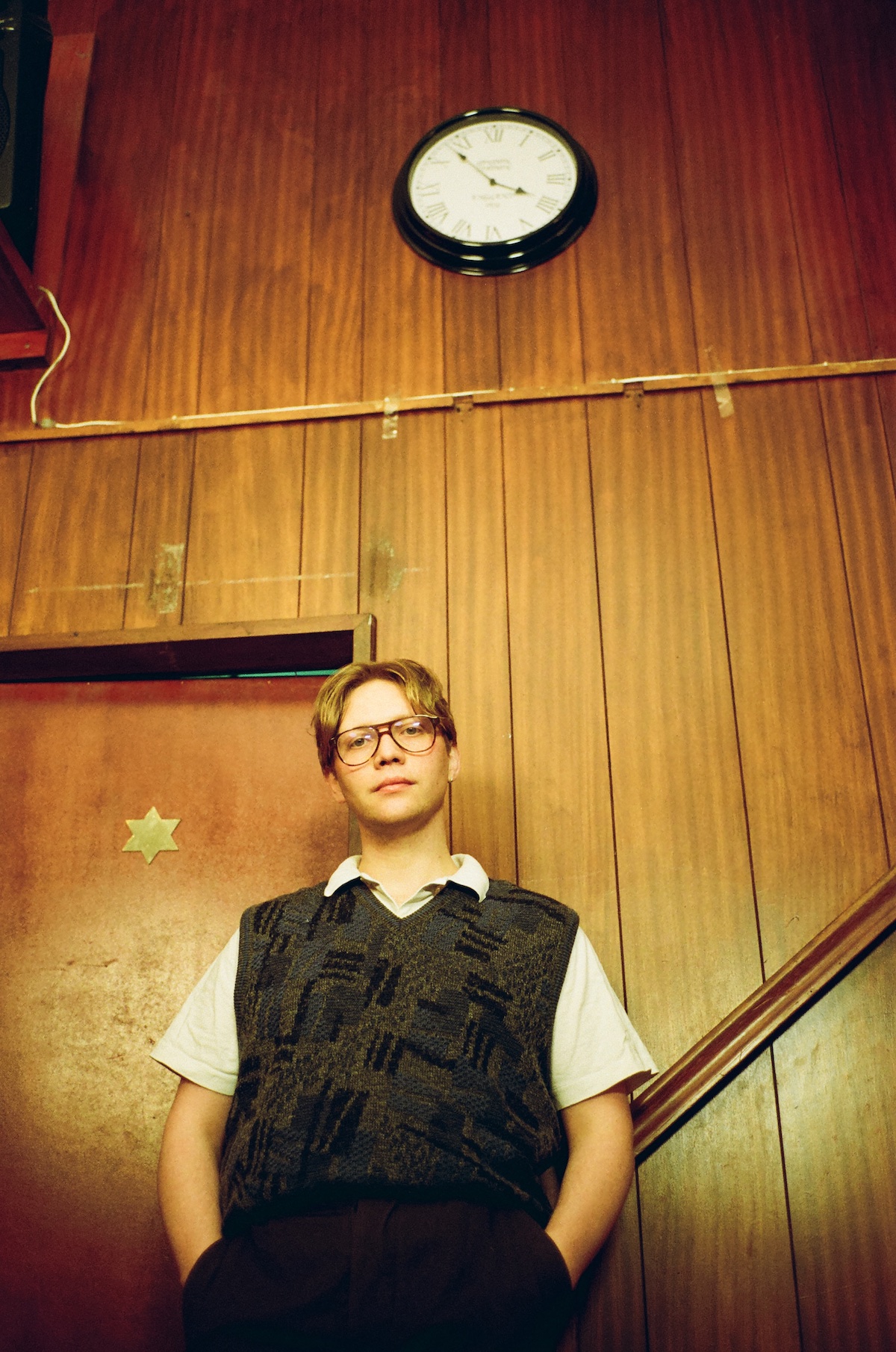
Working together with producer Joseph Futak (Tapir!, Lilo) and close friends and songwriters like Elanor Moss and Matthew Herd (of Seafarers), Griffiths made Same Mistake Twice into much more than a ‘reintroduction’ to The Howl & The Hum; rather, this record is best appreciated and experienced as a rebirth.
“I think it acknowledges what it was before at the same time as stepping into a very new place,” he muses. “It used to be four people and now it’s one person, it’s a thing that I don’t ignore. It’s something that I want to be quite specific about. We reference it on the album cover with the fact that there’s no longer four people in the band. There’s me and this weird, mutated giant-headed man, which in some respects is the remainder of the band and in some other respects this weird, inflated ego version I have of myself. But it felt like more of a communal record than before because there’s so many more people working on this album, which was very strange. It was a wonderful thing to experience, but because the band members left over the course of the last couple of years and it was left to me and any people that I was working with at the time to make the album. So old friends, new friends, people who I had admired from afar who I was scared to approach before…”
“And so the album came about through community in collaboration, and I think it sounds like that – that was the impetus, anyway. Obviously, it’s got elements of real loneliness and real introspection, but it came together as a community. The loudest parts on the album were made loud because I was supported by my friends and held up by my friends. And I will hold them up as well in continuing to make this album, because there are so many people that helped me get it together, whether it be through co-writing or lending their backing vocals; the cast list of the album is really quite long. And although it came from a very personal place, I think it had quite a communal outcome.”
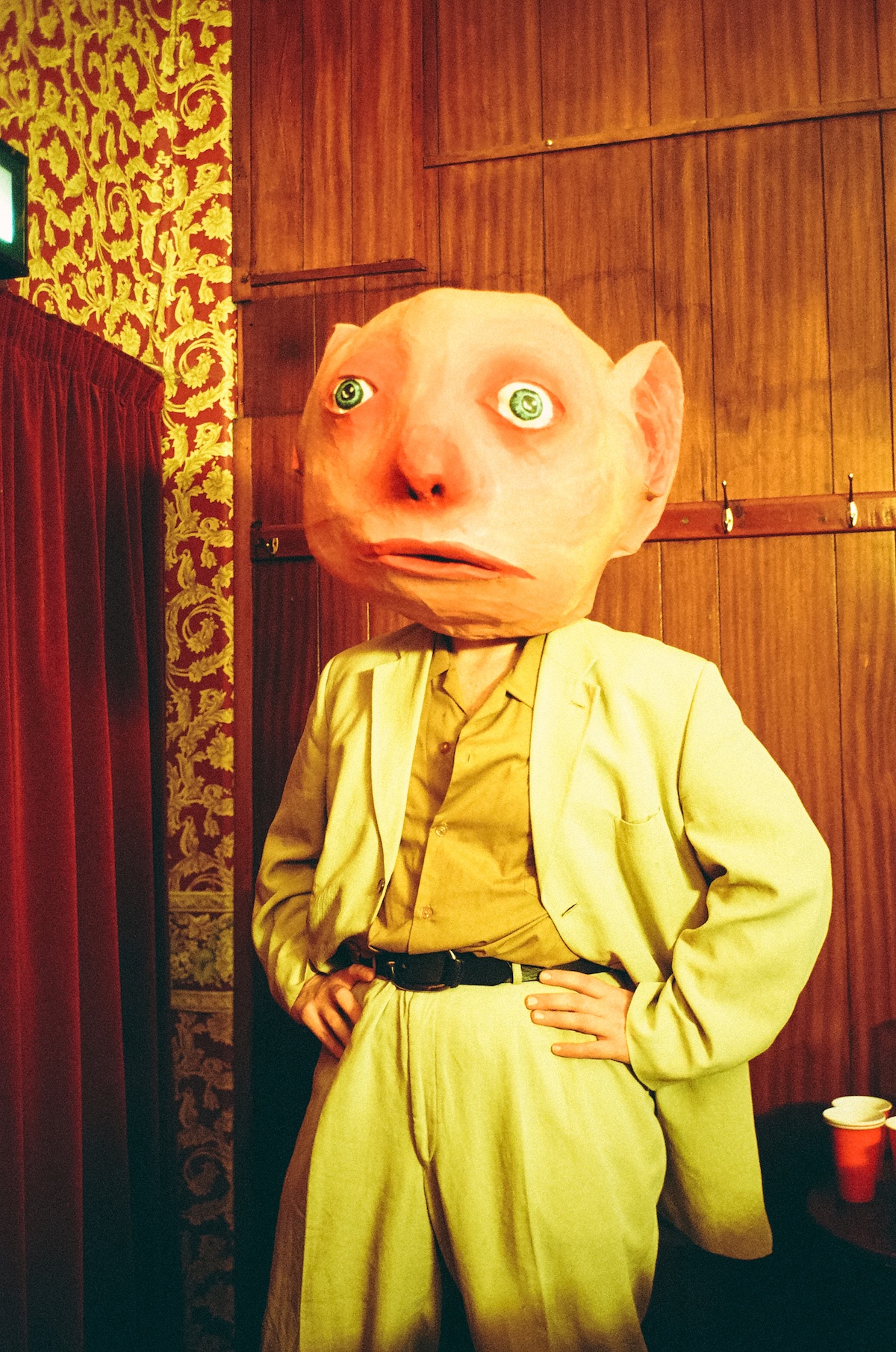
Along with highlighting human breath, Griffiths set out to capture what it felt like to be at The Howl & The Hum concert – “or at least from what I remember before lockdown, while we were on tour and things like that,” he chuckles (after a years-long hiatus, the current band will return to live stages later this fall). From what he recalls, it was a very emotive and at times quite epic sounding, but “a very emotional live show.”
“It was strange to do that without the original lineup, but I have never really stopped playing live in any entity. I’ve only ever really existed to play live. The studio stuff always seemed to be a bit of a secondary thing, and I think just because it can only exist in one way, a studio recording, whereas if you play live you’re seeing a very different version of something every single night and you’re experiencing something new every night. And that’s the thing that excites me about music, is the fact that it can change as you’re watching it. And so I guess I wanted to make something that felt like it could change when you listen to it over and over again. And that’s what we did with album two. So contained within are the mistakes we made as a live band and getting ready for it, and also, hopefully, something completely new.”
The live show’s emotional presence, human breath, dread… All these things coalesced, consciously and unconsciously for Griffiths, as he pieced together standalone songs into a cohesive, full-length musical journey.
… and laughter.
He may tear himself apart in song, but in person, Griffiths can be a riot when he wants to be. He’s quick with a joke, and leans into humor not as an escape, but as a space of joy and cheer. To that end, the album is named Same Mistake Twice because the lyric itself (“I never make the same mistake twice, I always aim for a third time”) made him laugh out loud.
“I went with the one that I thought was funniest and most immediate,” he grins.
As far as the songs themselves are concerned, the 42 minutes between opening track “Same Mistake Twice” and cinematic closer “Everything Is Not on Fire” are equally catchy and cathartic, emotional and enlightening, achingly intimate, vulnerable, and raw. The title track is itself dramatic, urgent, and angsty, and in many ways sets the scene for the album as a whole.
“It pays its dues to all the things we got right and wrong before, as a band, as friends and as collaborators, and celebrates the things that make us the most human: The what-ifs and the victories we carry around with us,” Griffiths explains. “It concludes that, despite all our bulls*** and arguments, if we were given a second chance at life from the start, we’d always make the same mistakes twice.”
“I’m waking up from a fever dream; I feel anew,” Griffiths sings on the spirited second track, “Dirt,” a smoldering, soul-stirring upheaval that unpacks how we’re remembered, how we judge others, and how we ourselves worry about judgment. It’s a tight four-minute reverie full of messy emotions and charged memories, with clever, witty lyrics that feel at once candid and effortless: “Well with the greatest respect you said ‘without me you’ve no chance of surviving,’ I said ‘the greatest revenge is living well,’ so f* you and I’m thriving,” Griffiths declares in a moment of simultaneous reckoning and revelation.
Further standouts include the sleazy, seductive blues rocker “No One Has to Know,” the feverish, frenetic, f*ed up, and (dare I say?) playful “No Calories in Cocaine,” and the plaintive, sober-eyed, and heavy-hearted “All Your Friends Hate Me.” While it’s true that much of the material Same Mistake Twice comes from a place of pain, the songs themselves are not dreadful, so much as they are “full of dread” – a description Griffiths says he’s going to try to embrace moving forward. In point of fact, the music is often upbeat and immersive, which speaks to Griffiths’ own ear for memorable melodies, well-developed beats, and irresistible lyric schemes.
For his part, Griffiths beams with pride when talking about every single song. There’s not a second of this record he doesn’t stand by.
“I think my favorite at the moment is between ‘Echo’ and ‘Everything Is Not on Fire,’ but it changes every couple of weeks and I’m really glad about that,” Griffiths beams. “There’s nothing on the album that I wouldn’t want anyone to hear.”
“At the moment [one of my favorite lyrics] is the one from ‘Echo’: ‘I’m not afraid to die, I’m afraid of the terms and conditions.’ I find terms and conditions such a boring part of everyone’s everyday life. And I think the idea that death, this sort of absolute, ultimate transcendent experience, or lack thereof, the idea that that could come with its own terms and conditions, really funny, but also it encapsulates the rest of the album, in that this album is sort of about all of the terms and conditions of, if not an afterlife, then how we are remembered after life, if that makes sense.”
I heard you got a tarot skull tattoo
Heard it hurt more when you got it removed
You hid it because it meant something to you
Echo, echo, echo
You used to say
I’m not afraid to die
I’m afraid of the terms and conditions
Maybe the reason that you never call
Is because you think I’ll never listen
But if I let the phone ring out
There are things that I’d never say out loud
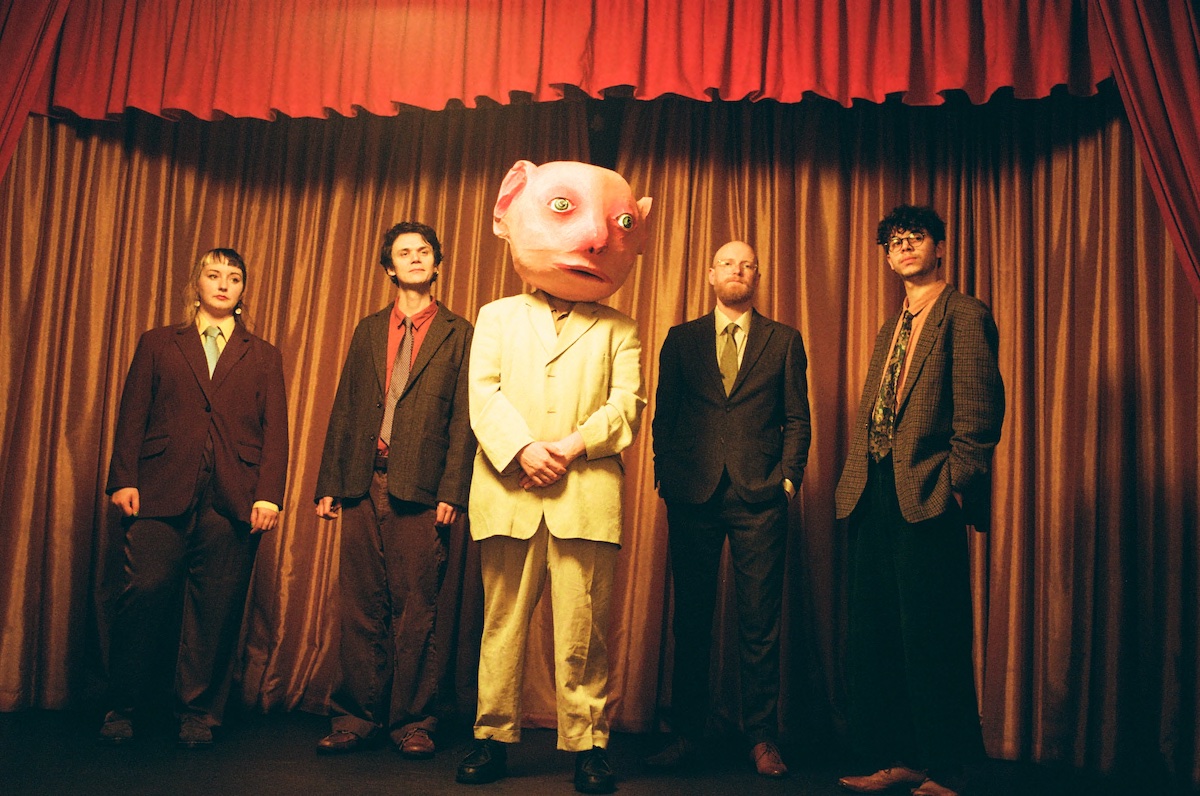
A tender, and at times turbulent tempest, Same Mistake Twice ultimately serves as a beacon of love, light, hope – its songs evoking the power and beauty of human connection.
It’s a resounding testament to Griffiths’ fresh, inspiring perspective on life itself: That our scars are not regrets, but rather reminders of the paths we’ve taken; that our memories are not to be forgotten or ignored, but embraced as a part of our overall package. Because just like Griffiths, if we had the chance, we, too, would always make the same mistake twice.
And maybe that’s a truth worth celebrating.
How are you? Sit down
How’s the search for the job?
Have you considered
Getting hit by a car?
Live off the insurance claim for a while
It’s fine ’cause everything is not on fire
Just eat yourself fitter, smoke yourself thin
Retrain for a trade that, there’s money in
Find Jesus on Tinder, maybe you’ll find
He’s fine and everything is not on fire
– “Everything Is Not on Fire,” The Howl & The Hum
“I really hope that people can experience the sense of light and joy that was found in creating art about something so inherently miserable and dark, because there is humor and joy in all that we do – even if it’s difficult to find,” Griffiths shares.
“And I think the most fun and the most rewarding experience on this album was finding that joy, looking for it, and finding it and managing to uncover these gross, brittle elements. And at the end of the day, finding something comforting and funny and realizing that it’s the love of your friends that carries you through.”
Experience the full record via our below stream, and peek inside The Howl & The Hum’s Same Mistake Twice with Atwood Magazine as Sam Griffiths takes us track-by-track through the music and lyrics of his sophomore album!
— —
:: stream/purchase Same Mistake Twice here ::
:: connect with The Howl & The Hum here ::
‘Same Mistake Twice’ – The Howl & The Hum
:: Inside Same Mistake Twice ::
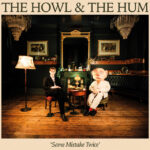
— —
Same Mistake Twice
“Same Mistake Twice” was written after I spent a day writing with one of my friends. We were spending a day writing and he was talking about an ex-girlfriend or an old flame, I don’t know if they’d ever dated, and he was messaging her. I think she was in America actually. He was messaging her. And it turns out through the course of their conversation, of trying to reignite this old flame, that she was now married. But she was staying in a hotel room away from home and she was messaging him saying, “Oh, I don’t know how I’m feeling about our marriage and I remember sort of like the heady days of when we were together, when we used to hang out a little bit more.” And Ben was, oh no, I’ve given his name. I’m going to erase his name. And he, [chuckle] this fellow songwriter, said he was thinking about all of the different paths that he could have taken that would have ended up with this girl in his life. And so they were leaving each other all of these voice notes as this sort of evidence against each other.
And in his head, all of these separate voice notes were each a sort of different path, different path down a different life, like that old Robert Frost poem, that two roads diverged in a yellow wood and I took the one less traveled by. It’s like all of these different paths were opening up and he wasn’t taking any of them. He was still staying firmly rooted in one spot. And I loved that. I thought it was so funny, and I thought it was so relatable. We’re all full of these weird contradictory paths that could have led to different lives and could have led to so many could haves. Like all of these different moments in our lives and we’re sort of constantly on the brink of possibility. And that just felt so much like a song. So I think after our chat, I went home and I wrote the opening two verses on the piano. And the rest of it is inspired by a bunch of people that used to come in the pub that I used to work in, just down the road from me, The Cardigan Arms in Leeds. The bar is lined with people full of stories. And so the rest of the lyrics in that song are, he got a divorce… The line about getting a job in PR. He left Michelle for a job in PR, and now he’s got hard drives of pictures of her.
That was me overhearing a conversation at the end of the bar of just, it’s mostly old men full of regrets. And the more alcohol you serve them, the more regrets you hear. And so the pub was brimming with it. There are so many stories when you work at a pub. And so a lot of my favorite lyrics that I’ve written are usually just borrowed from some of the guys propping up the bar in that pub.
Dirt
I think “Dirt” is one of my favorite melodies I’ve ever written in a song. It’s one of the most instantaneous pop melodies. I spent a lot of lockdown listening to, do you know the band MUNA? Amazing, amazing, genius. I love them so much. But that really got me into energetic pop writing again. And so there was sort of a couple of months, I seem to go in stages, cycles, when I’m writing. In which I’ll only listen to one artist and basically try and rip them off every single day. I think “Dirt” was my big MUNA rip off. And it was about a breakup. It was about a breakup that I went through in lockdown. And it also had quite a lot of the insinuations of what it’s like to feel a band splitting up, because I feel like a lot of the breakup feelings are the same like that. I was thinking about one of these lines when I was singing it the other day, but, I guess your parents will forget me now like mine forgot you. That weird administrative bit of breakups where the parents have to agree to remove themselves from the other person’s life, is so weird and so full of… It’s just full of complications and really messy emotions. And that’s what the best pop songs are full of. So I wanted to put that in there.
And I guess this song is one of the closest of the crux of the album, which is about how we’re remembered and how we judge others and how we are worried about how we’re judged. That’s kind of the chorus for me. And I don’t think it could, yeah, I love… I tend to write choruses that are way too long. And this one was just like snappy as f*. It’s like, there need to be no more syllables in this song than you’ve got dirt on me. So I was just like, “Okay. Great.” I feel like if the Spice Girls would sing it, I’m happy.
All Your Friends Hate Me
This was probably the first song written for the album. I think this was the, like “Same Mistake Twice”, the lyrics came quite early, but the first full song for the album was “All Your Friends Hate Me”. And it came from that real pit of despair of a really bad end to a relationship and really leaning into the idea that, actually have I f*ed up so much that I’ve ruined all of my life, all connections I’ve ever made? Is there no going back from this? And is this how I’m eternally going to be judged? And it’s kind of like, it sounds quite, the music of it is quite jaunty. And, again, listening to a bunch of country music and there’s an amazing Irish artist called CMAT, who I was listening to quite a bit when I wrote that song. So, again, it’s just that trying to use humor to express something really dark. But I like this song because it’s got, it offers light at the end of it. The final line of the song is, I hope you find someone who loves you like you should be loved. Which to me is sort of the perfect open ending to something so dark. It’s like, I’m sorry I couldn’t give you what you thought I could give you, but I hope the world gives you what you expected.
It’s sort of the ultimate way out of sheer depression, is hoping that only good things come to this person that you’ve wronged. Because if they won’t forgive you, you can forgive yourself, but you can just hope that the universe offers them something beautiful.
No One Has to Know
This is the closest to our old live sound, I think. We used to really rock; we still do. This is, again, one of the first songs written… So this is probably the darkest song because there is, although there’s humour, there’s not very much light. It doesn’t offer the same light as like, “All Your Friends Hate Me”, but it’s sleazy as f*. When I went, you know what? I actually rewatched Normal People the other day, and there’s a line in it in which Connell says to Marianne, I think I’ve got their names right. He says, or she says, “Why don’t we tell anyone about this relationship? Or aren’t you worried about your friends hearing about us?” And he says, “No one has to know.” And I was like, did I, maybe I stole that from this. Maybe that is about this sort of a secret relationship. But I think at the time I was building it on something much sleazier. Like they’re both very likeable characters at their best. Whereas I think the dude in this song is a f*ing a**hole who is trying to, he’s trying his best to be as sleazy as possible, but make sure that people don’t know about the worst of his sleaze. And there’s a line in it, which kind of makes me laugh every time I sing it, which is, don’t you find it strange how we make love with our eyes closed? Don’t you find it strange how I called it making love? Which is just sort of like, I think it’s the, I’d like to think it’s the opposite of me, but that guy gets his ick from calling things love, which I think sums up his character.
No Calories in Cocaine
“No Calories in Cocaine” is a song that I never thought would make it onto any The Howl & The Hum album, but it was a very shoddy acoustic demo. Originally written on the piano as a sort of ballad, and it’s gone through various incarnations, and in some ways it does still exist as a ballad. But, yeah, I think “No One Has to Know” and this one are really from the absolute depths of my consciousness. I think one of the scariest parts about depression and anxiety is the logic that goes along with it, is telling yourself that these things are okay, and the mathematics behind the worst parts of depression are awful. And so there’s no calories in cocaine is an actual sentence I told myself once before going on a… Well, it was during lockdown, so it was a night in, but going to a friend’s around the corner. And then I just sort of came to the next day and I was like, how did I ever think that? How is that an all right thing to turn into? And so I wanted to explore it, and I’m very happy with the melody. I’ve never really written a melody like that. I think it was inspired by a bunch of Shoegaze stuff. And I was listening to a lot of Lucy Dacus at the time. I think there’s a couple of Lucy Dacus-inspired moments in there as well.
And then production-wise, we spent a really long time on that song. Because it did exist as a ballad, it then existed in this much heavier and even heavier version of the space that it does now. It was higher and it was really loud and really screechy, almost like Mountain Goats or John Daniel’s most sort of eviscerating vocals. And we brought it down a touch and then it started to live in this… I really love Neutral Milk Hotel. It started to live in that world a little bit more, especially around that ‘On Avery Island’ album, sort of started to live in that world a bit more. And I adore that album. And ‘In the Aeroplane Over the Sea’. And so I was very happy with it sitting there. So that’s how that one came. And after we recorded the saxophone to “Same Mistake Twice,” we realised that we could actually add this really chaotic sax as well onto that song, which is where that crazy solo came in.
Everybody Loves a Crime Scene
In the way that some of the more furious songs have existed as ballads, this one existed as a rocker at one point. It almost existed as like a War on Drugs-esque, full on 180 BPM sort of thing. When I sit down… I think this one started at the piano. When I sit down to write something, I tend to have an idea of where the backbeat is in my head. And so this one started a lot faster, like, I guess quite… Vocal melody-wise, inspired by The National. I really love The National, especially around that High Violet era. And in my head, it was gonna have that sort of feeling to it. And then Joe Futak, our producer, is the one that sort of brought this all the way down. This is probably my favourite sounding track on the album, because it took in all of the really intimate, folky moments of Adrianne Lenker and Big Thief, who I love, and combining it with this really quite soundscape-y, gorgeous, almost Sufjan-y textural piece. Like something really gentle, but really morbid, and at times quite terrifying, like talking about car crashes and terrible things that happen at parties. And the quieter it got, the more vicious it felt. And I love that. It feels like serrated, almost, this song. It feels really quite mean. And the quieter it gets, the meaner it feels. But, yeah, I’m really proud of that one.
The Wheel
“The Wheel” existed in so many forms over the years. So it was originally a song called “The Fear,” which is a bit too on the nose. And sort of, I didn’t really know what the song was about, but Connor, our old guitar player, had this guitar riff that isn’t actually on the song, but it’s where the song came from. And he had this vocal idea, and that was all we had. And then maybe three or four years later, it turned into “The Wheel”. It took so long to be able to find the right lyrical idea, ’cause we were really into the song. It had this really Shoegaze sound when we started writing it years ago. And then eventually it turned into “The Wheel” because it sat in this place of realizing that a relationship is wrong and controlling, and finally being able to take control, take over the wheel. Which is why we put it at the start of album two, because album two starts to feel like it is… I guess it offers the most light, whereas album one has the most chaos and real misery. Album two starts to offer a way out. Sorry, side two starts to offer a way out. And I think “The Wheel” did that in a really cool way. And the verse didn’t exist when we had originally written it. And then I sat down at the piano one day and tried to write a Radiohead song. And it came out as the verse of “The Wheel” and had loads of really weird lyrics.
But the way that I write lyrics or the way that I write the lyrics that usually stick around, I’ve got like thousands and thousands of notes on my phone. Sometimes they’re just one word or they’re a couple of words. And I basically kept grabbing them and moving them over into this document. And this song started to come about through a bunch of stuff that I’d noted about driving around. Well, when you’re a band on tour, you spend so much time on the endless British highways, which suck. They’re such bad roads and they just become this sort of monotonous space. And I got really fascinated with this idea of, do you know highway hypnosis? Have you heard of that? I think it’s an American expression, strangely, or at least I read about it on NPR or something. And so basically it’s where if you commute, if you drive to work, it’s where you essentially get in your car and then you wake up on your driveway. If say you’re at work and you wake up at home. And I got fascinated with that and started to explore the ideas around the geographical elements of that. So stuff like the sweet smell of petrol and all these really brutalist images and architecture and stuff. So that song takes place in quite a British motorway sort of setting, really bleak and awful. But I’m proud of that song, it’s cool.
I Loved a Boy
“The Wheel” came from one of Connor’s ideas years ago, and “I Loved A Boy” came from a couple of Connor’s, I think he just had a couple of ideas on Ableton and it was just like, we were really into Hovvdy and Big Thief, both produced by Andrew Sarlo, who we love as a producer. What a genius. I’ve actually literally got a pedal right here that I heard that Andrew Sarlo has. A friend of a friend of a friend knows Andrew Sarlo and they say that he uses this pedal, Lo-Fi Junky. And so I ordered it from the States and it’s crazy. You plug it in, you plug vocals in and you’re just like, “Oh cool, it’s a Hovvdy song.” So Connor had this beat and he had two chords and that was the bulk of the verse, and then I added the piano melody on top of that, and suddenly it started to feel like this Hovvdy song, and we were both such huge fans of Hovvdy. And then I took the song away and added a vocal line that, to me, it didn’t really have any lyrics, but I started singing that ‘I loved a boy’ thing because my cat is called ‘The Boy.’ [laughs]
I started singing about how much I love my cat to make Connor laugh, and it worked. At the time it was taking on this place that was somewhere between Hovvdy and Alex G. I really loved that ‘God Save the Animals’ album that came out. I love everything that Alex G has done really, but especially that era. The song came about like that, and I’m really glad the Hovvdy thing came through because I love Hovvdy. I went to see them recently at the Brudenell in Leeds and they were awesome. But I love that genre of music and I really wanted to get that across. That’s probably one of my most listened to, one of my most listened to artists. And we really wanted that sense of expression and explosion. And, well, when I listen to Hovvdy, I get this odd feeling of like a youth that I never lived. Like I listen to them and I imagine myself skateboarding through Texas. I don’t skateboard and I haven’t spent very much time in Texas at all, but I’m just like, that’s me as a kid. So we wanted to put that in. And then the song became about young love and things that fall through your hands because, to me, what more identifies childhood than that? [laughs]
Back in Time
This is such a ridiculous song. The one thing I do worry about, well, not worry about, one thing I’m aware of is, it’s very difficult to pin this album down as one particular genre. ‘Cause I think one of the things that Hovvdy do incredibly, for example, do incredibly well is, you listen to Hovvdy and you go to Hovvdy for a mood. And they get it spot on every time, they get exactly the mood that you’re there for. Whereas we’ve put “I Loved A Boy” next to “Back In Time” and to me those songs… Maybe it’s ’cause I wrote them, but they’re so different. So “Back In Time” I wrote with my friend and collaborator, Elanor Moss, who is a genius songwriter. And this song came at the end of a really long writing day. And we were just thinking of chucking out, just chucking together a song in sort of half an hour. And we were talking a lot about this book called Before the Coffee Gets Cold. I don’t know if you’ve ever read that. I think it was like a bestseller or something somewhere. But it’s about a coffee shop in Japan that allows the customers to go back to a point of time in their life as long as they were sat in that coffee shop. It’s like a time traveling thing that they only get to go back to one moment that they had in that coffee shop.
And we loved that idea. The idea that you can go through different moments of your life, I guess in… Not in too dissimilar way to “Same Mistake Twice” but go back through moments in your life and like re-experience it, re-experience moments in your life, but with what you know now and project different emotions onto the same moment. So that’s where that song came from. And it turned into this weird Rolling Stones-y raucous over the top Rock song, which again, is sort of where we came from as a live band. It really came from an indie rock perspective, and then this song took on that life, and then we added this sort of ridiculous, raucous saxophone, electric guitar thing on top of it. But I think when we do this live, it’s gonna be a real highlight of the set. I think it’s gonna be really fun.
Echo
Oh, “Echo.” This might be my favorite song in the album. It’s my favorite to play live at the moment. “Echo” was the final song to be written for the album. It came from, again, me listening to quite a lot of Alex G and American Football. Obviously, there’s this sort of Midwest-y emo influence in there, but also a lot of Christian Lee Hutson and Phoebe Bridgers. I really love that style of storytelling where you get snapshots into someone’s life, where you get like photographs of a moment, or even just little video reels almost taken out of context of someone’s life. So each one of these verses is sort of that, and it turns into this song, which is sort of about forgiveness and sort of about judgment. But one of the things I like about this song is I don’t really know what it’s about. It’s just a bunch of weird photographs that I’ve found on the floor and I’m piecing them together and making this weird collage. And then it’s all accumulating in this line that I’m not afraid to die, I’m afraid of the terms and conditions. Which I guess is just about this really long-standing relationship with someone and with yourself about how much can you forgive? How much will you let go? How much are you gonna let slide at the end of it? And so much of this album is to do with death and what we do and how we’re remembered at the end of it. But I thought combining that with terms and conditions was funny enough to make it relevant to these days.
Pale Blue Dot
I’m really proud of this song as well. “Pale Blue Dot,” the chorus of this song was one of the first lyrics I was happy with for the record. It sort of all came out at the same time as like “All Your Friends Hate Me” and “Same Mistake Twice,” where it was, I knew that the song was gonna be sort of based on a lot of anxieties that come out of spending too long on the internet. That weird judgment that comes from being a digitized entity and kind of at times feeling like you don’t really exist in the real world. And so the lyric I just want to be loved by everyone all of the time, was a lyric that made me laugh and feel incredibly stupid at the same time. So I knew it was the right lyric to put in the song. And the rest of the song took a long time. I think there’s something like 40 or 50 different verses for this song. And there are so many different ones that I am considering choosing to play live as well, like pretending that I’m Bob Dylan and changing the verses every time I play it. But I’m glad we chose the ones we did. I love the “Pale Blue Dot” image and trying to see the Earth as a… The Earth through that little shard of light in the Carl Sagan picture.
And the rest of the song is, again, little photographs, little moments, little pieces of… Like fragments of life and relationships and how we see ourselves and other people. So I think it continues to drift along that line. I’m just trying to think of any of the lyrics in it myself. And one thing I know I always forget to talk about, but I think Joe Futak, the producer, really nailed the production on this song. He’s the one that added all the sparkly little moments and the moments of like vocoder and autotune. And we wanted it to lie somewhere between like a Radiohead song and a Phoebe Bridgers song. And I think he did that really well. But, yeah, I apologize if I can’t think of all the lyrics. They always escape me unless I’m singing them right now. Oh, no, there’s one I pick in the pre that I’m really proud of, which is… What is it? Something evil both… I realized people are both good and evil, it’s just how you prove it online. I thought that was a cool line. It was one of the first lines where I’d taken it. I’d stepped back a little bit. It was less about me judging myself, and it turned out more into like a, “Oh shit, maybe we’re all experiencing this. Maybe we’re all going through this. Maybe all of us are thinking this.”
Everything Is Not on Fire
This was a little idea that had been lingering around for a while. Started just as lyrics, didn’t have any melody. And then when I found the melody, I realized it could have this pulse. It felt like it had a real heartbeat to it as soon as I found the melody. And the song is just essentially a list of things that I was experiencing. Not quite on a daily basis, but things I filtered through on the internet, whether it be finding Jesus on Tinder or being told that you should join the Army when looking for a job [chuckle] or… It is probably the one with the widest scope. It’s the one where I was trying to step out of myself the most and have a look at the world around me. And I feel like with every verse, the footsteps get wider. Like they get further and further apart until eventually we’re almost like standing on the brink of the world watching it burn. And it was the final song we recorded. I said I was a busker. And so this was recorded with my busking band, with Kai on the bass and Rupert on the violin, and Ben on the accordion. And we recorded it in York where I used to busk. And so it was like a real… It felt really full circle. And we wrote all of these melodies to it in the recording room.
And then the final thing that we ever recorded for the album was recorded at my friend Matthew’s flat, where me, Matthew Herd, who helped me write a lot of the album and was the sax player on it, who was a genius, and Elanor Moss, who helped me write a few of the songs and provided backing vocals for most of the album, and Joe Futak, the producer. All got together in this flat in London, my friend Matthew’s flat, which overlooks London like in the most ridiculous way, but it’s in Bethnal Green and it overlooks all of East London. And we recorded the backing vocals to that song as the sun was setting over Whitechapel Hospital. And I think it sounds like that, it sounds like the sun was setting over London as we recorded that. So it’s both full of dread of things to come and not having any answers, but also being entirely thankful for what I’ve got, especially in the shape of my friends and collaborators and the people that I love around me. And, yeah, it had that real sense of light in the face of darkness that I wanted the album to contain. And I’m glad we got something surreal out of the end of it.
— —
:: stream/purchase Same Mistake Twice here ::
:: connect with The Howl & The Hum here ::
— — — —

Connect to The Howl & The Hum on
Facebook, Twitter, TikTok, Instagram
Discover new music on Atwood Magazine
© Stewart Baxter
Same Mistake Twice
an album by The Howl & The Hum


 © Stewart Baxter
© Stewart Baxter